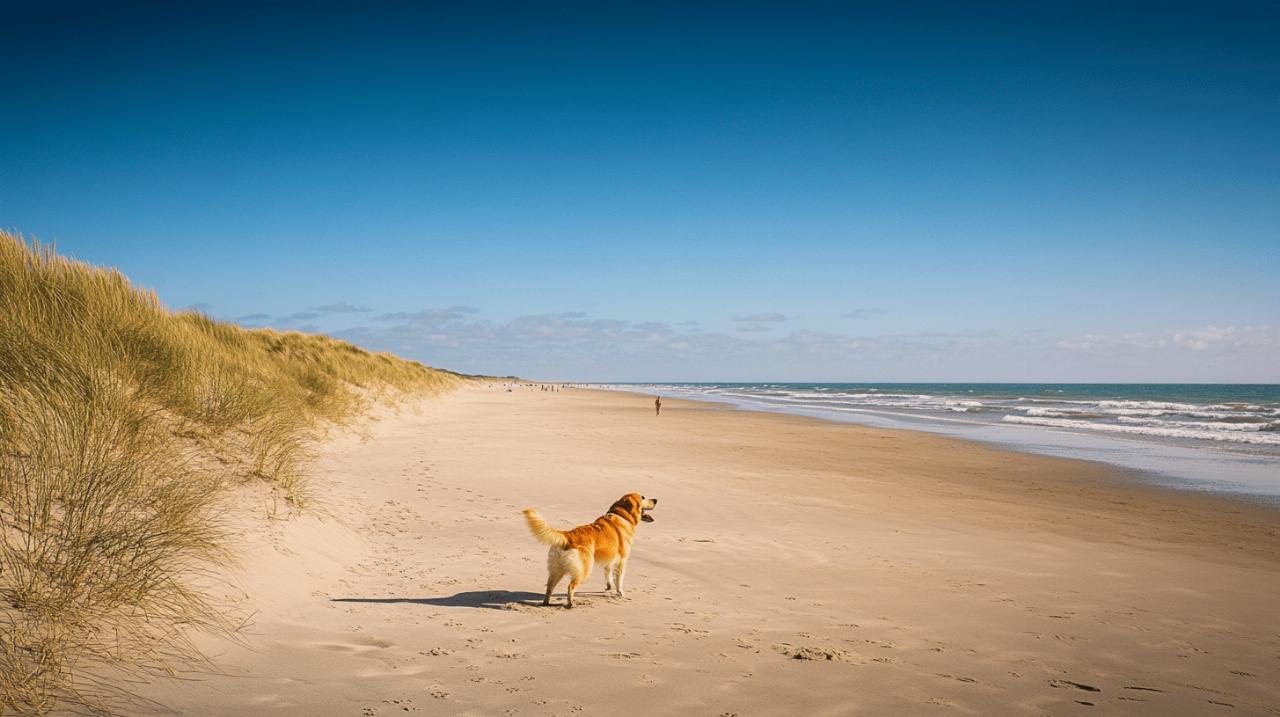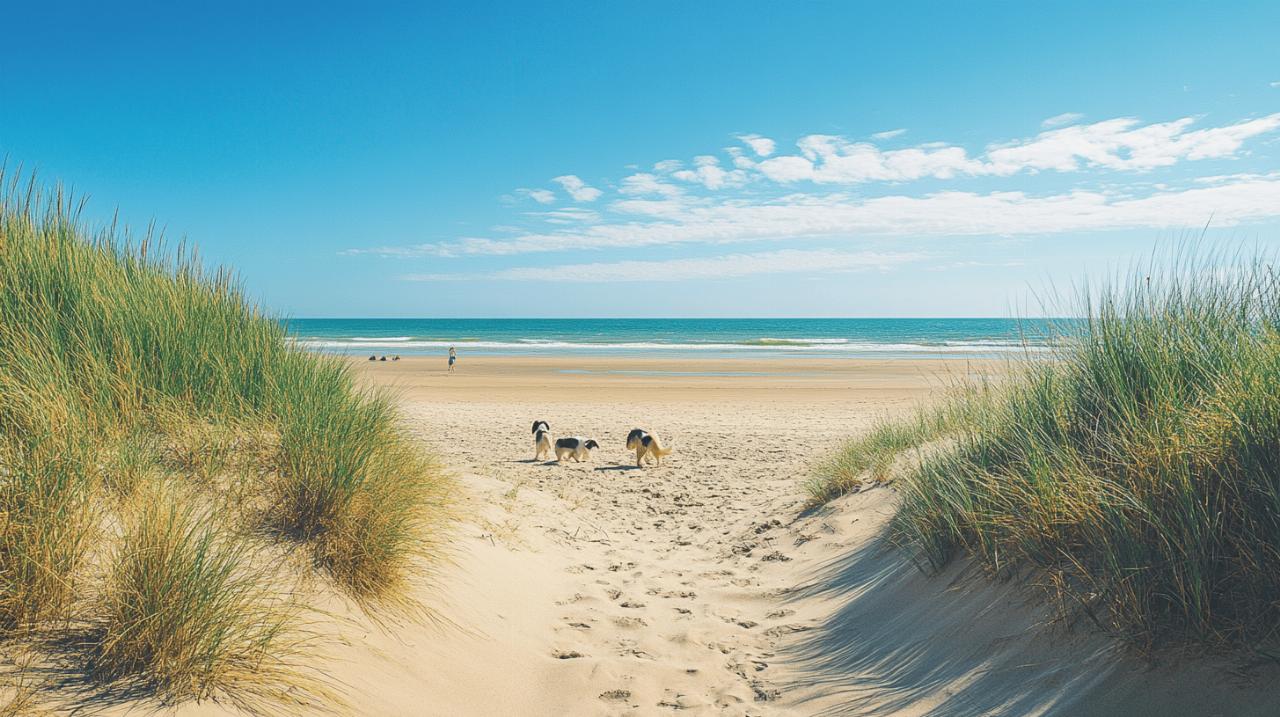If you fancy a coastal getaway with your four-legged friend to the Guérande region, you are in for a treat. This stretch of the Loire-Atlantique coastline offers a delightful mix of sandy shores, charming villages, and a rich natural heritage. However, taking your dog along requires a bit of homework. Local regulations, designed to balance tourism with the protection of delicate coastal ecosystems, mean that not every beach welcomes dogs at all times of the year. Understanding these rules ensures a pleasant holiday for you and your pooch whilst helping to preserve the stunning environment and wildlife that make this area so special.
Navigating Dog Access Regulations on the Presqu'île de Guérande Coastline
The beaches around the Guérande peninsula are justly popular with holidaymakers, but their appeal means that access for dogs is carefully managed. During the height of the summer, when visitors flock to the coast, many beaches enforce restrictions on canine companions. These measures are in place to maintain cleanliness, protect nesting seabirds, and ensure that everyone can enjoy the seaside safely. The exact dates and locations where dogs are permitted can vary considerably, so it pays to stay informed before you set off.
Seasonal restrictions and peak summer limitations
Between the first of June and the end of September, most beaches in the area either ban dogs outright or impose strict time limits on when they may be walked. This prohibition is primarily driven by concerns over pollution and the need to safeguard marine habitats during the busy tourist season. For instance, certain stretches around Pornichet and La Baule welcome dogs on the sand outside of the summer rush but become strictly off-limits from mid-June through to mid-September. Similarly, spots such as Govelle Beach at Batz-sur-Mer permit dogs throughout the year but restrict access during peak hours between ten in the morning and eight in the evening from mid-April to the end of September. These time-sensitive rules mean planning your beach visit around the local bylaws is essential for avoiding disappointment or fines, which can reach upwards of thirty-eight euros for failing to clean up after your pet.
Where to Find Up-to-Date Information on Local Beach Bylaws
Because regulations can change from one season to the next, and even vary between neighbouring beaches, checking the latest information is crucial. The Tourist Office in La Baule, located at Place de la Victoire, is a fantastic resource. Staff there can provide tailored advice on which beaches currently allow dogs and under what conditions. Ringing them on 02 40 24 34 44 before your trip can save you considerable hassle. Additionally, detailed signage is usually displayed at beach entrances, making it straightforward to confirm whether your dog is welcome. Local town hall websites and regional tourist portals often publish updated maps and timetables, so a quick online search before you pack the car can ensure you are well prepared.
Top dog-friendly beach spots around saint-nazaire and la bernerie-en-retz
Despite the restrictions, there are still some excellent spots where you and your dog can enjoy a romp by the sea. Lancastria Beach at Moutiers-en-Retz stands out as a real gem for dog owners, offering year-round access and the freedom to let your pet off the lead. This makes it a superb choice if you want your dog to burn off energy with a good run along the sand. Further along the coast, Cormier Beach at La Plaine-sur-Mer allows dogs on a lead between the first of October and the end of May, though swimming is not permitted. Meanwhile, the beaches around Saint-Nazaire and La Bernerie-en-Retz offer pockets of access during quieter months, provided you keep your dog on a lead and remain vigilant about cleaning up.
Permitted Areas for Dogs Along the Loire-Atlantique Shore
The Loire-Atlantique coastline is dotted with beaches that adopt a flexible approach to canine visitors outside the summer peak. At Pornichet, the beaches of Sainte-Marguerite, Librairies, and Bonne Source permit dogs on leads from mid-September through to mid-June, giving you plenty of opportunity to enjoy the sea air during spring and autumn. Meanwhile, Gohaud Beach at Saint-Michel-Chef-Chef allows dogs before ten in the morning and after seven in the evening, except during the height of summer when a total ban applies. These windows of access mean early risers and evening strollers can still share the coastline with their pets, even when daytime restrictions are in force. If you are travelling through the area, it is worth mapping out these permitted zones in advance so you can make the most of the opportunities available.
Responsible pet ownership: cleaning up and respecting wildlife zones
Wherever you take your dog, being a conscientious owner is paramount. Always carry poo bags and dispose of waste properly in the designated bins. Failing to do so not only risks a fine but also contributes to pollution that can harm local wildlife and spoil the beach for others. Keeping your dog on a lead in sensitive areas, particularly near dunes and wetlands where ground-nesting birds may be present, helps protect these vulnerable species. The regulations are not just bureaucratic red tape; they reflect genuine efforts to preserve the natural beauty and ecological health of the coast. By following the rules, you play a vital role in maintaining the balance between recreation and conservation.
Exploring saint-michel-chef-chef: finding quieter beaches for your canine companion
 Saint-Michel-Chef-Chef is a lovely spot for those seeking a more tranquil coastal experience. Whilst some sections of the beach here are off-limits to dogs during the summer, other less crowded stretches may offer more flexibility. The key is to visit at off-peak times and to seek out quieter areas where local regulations are more lenient. Early morning walks or late evening strolls are often the best bet, allowing your dog to enjoy the sand and surf without infringing on the busy daytime beach scene.
Saint-Michel-Chef-Chef is a lovely spot for those seeking a more tranquil coastal experience. Whilst some sections of the beach here are off-limits to dogs during the summer, other less crowded stretches may offer more flexibility. The key is to visit at off-peak times and to seek out quieter areas where local regulations are more lenient. Early morning walks or late evening strolls are often the best bet, allowing your dog to enjoy the sand and surf without infringing on the busy daytime beach scene.
Off-peak times and less crowded coastal stretches
One of the advantages of visiting Saint-Michel-Chef-Chef is that its beaches tend to be quieter than the major resorts further west. This makes it easier to find space where your dog can stretch their legs without disturbing other beachgoers. During the shoulder seasons of spring and autumn, restrictions are typically relaxed, and you may find entire sections of the coast where dogs are welcome throughout the day. Even in summer, early mornings before the crowds arrive or evenings after the sun has started to dip can offer precious opportunities for a peaceful walk. Exploring the less commercial parts of the coastline, away from the main bathing areas, can also reveal hidden coves and quieter sands where you and your dog can enjoy a bit of solitude.
Consulting local tourist information for current dog beach access
Tourist information centres are invaluable when it comes to navigating the patchwork of regulations around the Guérande area. Popping into the office at Saint-Michel-Chef-Chef or contacting them by phone can provide you with the most current advice on where dogs are allowed and at what times. Staff members are usually familiar with the nuances of local bylaws and can point you towards the best spots for a dog-friendly day out. They may also be able to suggest alternative activities, such as coastal paths and woodland walks, where your dog is welcome year-round. Taking advantage of their local knowledge ensures you make the most of your visit without any unpleasant surprises.
Protecting Coastal Wildlife: Why Beach Regulations Matter for Dogs and Nature
The restrictions on dogs at beaches are not arbitrary. They are carefully designed to protect the delicate ecosystems that thrive along the Guérande coastline. Coastal habitats are home to a diverse array of wildlife, including ground-nesting birds, marine invertebrates, and fragile dune vegetation. Dogs, even when well-behaved, can unintentionally disturb these species, particularly during critical periods such as the breeding season. Understanding the rationale behind the rules helps foster a sense of shared responsibility for safeguarding these precious natural resources.
Understanding the Impact of Dogs on Nesting Birds and Marine Habitats
Many wading bird populations have suffered dramatic declines in recent decades, with some species experiencing reductions of up to ninety per cent over the last forty years. Dogs running free on beaches can flush birds from their nests, causing them to abandon eggs or chicks. Even a brief disturbance can have serious consequences for breeding success. Protected areas, such as Dumet Island, are closed to the public during the nesting season from mid-March to the end of July to give these vulnerable species a chance to reproduce without interference. Similarly, the voluntary ban on dogs at Richmond Beach during the winter months aims to protect wading birds that rely on these shores for feeding and resting. By respecting these restrictions, dog owners contribute directly to the conservation of bird populations and the broader health of coastal ecosystems.
How following local rules helps preserve the guérande peninsula ecosystem
The Guérande peninsula is renowned for its natural beauty, from the salt marshes and tidal flats of La Brière to the windswept beaches and rocky headlands that fringe the Atlantic. This landscape supports a rich tapestry of life, much of which is sensitive to human activity. The regulations governing dog access are part of a wider strategy to manage the impact of tourism and ensure that future generations can enjoy the same pristine environment. By keeping dogs on leads in designated areas, avoiding protected zones, and cleaning up after your pet, you help reduce pollution, prevent disturbance to wildlife, and maintain the cleanliness of the beaches. These small acts of responsibility add up to a significant collective benefit, preserving the character and ecological integrity of the region. When everyone plays their part, the Guérande coast remains a place where people and nature can coexist harmoniously.



